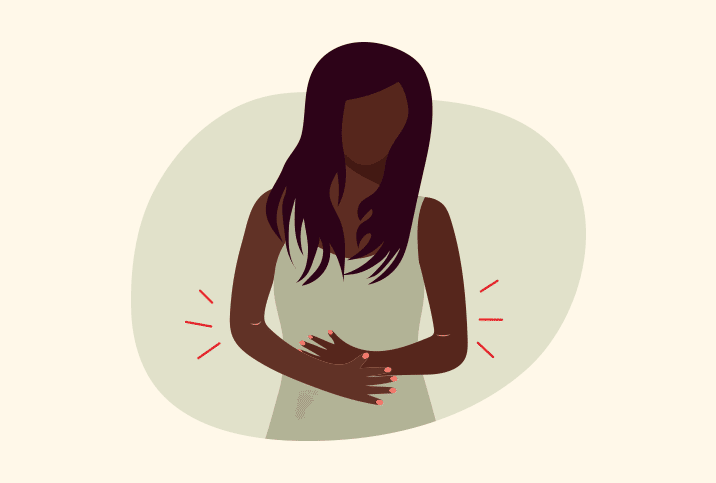All About Baby Kicks

Feeling your baby kick for the first time is one of the most magical experiences you can have in pregnancy, especially after dealing with the discomfort of morning sickness and other not-so-fun bodily changes that pregnancy brings. It's also the time when you need to start tracking the movements of your baby—an important way to monitor their health.
Keeping track of your baby's movement can be lifesaving. Sadly, there are still around 24,000 babies that are stillborn in the United States each year. Out of these, around half of the mothers felt there was a decrease in the movement of their babies in the days leading up to their loss.
Researchers believe that only 10 percent of stillborn babies' lives are lost due to a congenital abnormality, so it may be possible to save others.
Recommendations on monitoring
One way mothers can check in on their unborn babies is through heartbeat monitoring; however, some experts advise movement monitoring instead. Monitoring movements is preferable to using a Doppler machine (used for heartbeat monitoring) at home, as a Doppler machine won't show if the baby is in distress.
"Parents may mistake the mother's heart rate for the baby's. Even if they are certain they've heard the baby's heartbeat, this does not mean their baby is well," said Lesley Gilchrist, M.Sc., a registered midwife and co-founder of My Expert Midwife. It is recommended that any problems should be flagged to a doctor to monitor instead. The FDA recommends avoiding heartbeat monitors and at-home fetal ultrasound imaging as both are better suited for a doctor's office.
Joanna Coleman, a registered midwife and advisor for the pregnancy and parenthood health app Juno, agreed the best way to check on your baby's health is to keep track of their movements. "During pregnancy and birth, this should give you the best assurance of your baby's health and you should seek help straightaway if something feels different," Coleman said.
When should I start counting kicks?
The American College of Obstetricians and Gynecologists (ACOG) recommends that expectant parents start monitoring movements every day during the third trimester. This begins in the 28th week, but baby movements can be felt long before this period.
Coleman advises that while movement can be felt from 16 to 20 weeks of pregnancy, you will not be able to feel them consistently at this stage. It is between 18 and 24 weeks that the movements will become more defined. "There are a range of movements that may be felt from a flutter, rolling, swish or a kick, and later these movements will be stronger," Coleman said.
Coleman added that by 32 weeks gestation, these movements will have formed a certain pattern and strength. This can be an exciting time as you can feel your baby kicking, stretching, scratching, hiccuping and punching—and you can even feel what position they're in. It is worth noting that hiccups don't count when monitoring movements, as these are involuntary and not a trackable indicator of a baby's health.
Those first baby movements are thrilling but are sometimes hard to distinguish from other pregnancy symptoms in the beginning. "They may feel like a little flutter or gentle tickle at the start, so can easily go unnoticed or be confused with feeling bloated and gassy," Coleman said.
She advises that it's okay if you haven't felt much movement before 20 weeks, but if that's still the case between 20 and 24 weeks, contact your maternity team. It can sometimes be easier to track movements for a second pregnancy, as you will know what they feel like.
How to track movement
Count the Kicks is "an evidence-based stillbirth prevention campaign that provides educational resources to healthcare providers and expectant parents" based in the U.S.
Count the Kicks provided this advice to us to help with monitoring movements and kicks. Starting in the third trimester (28 weeks, or 26 weeks if you are high-risk or pregnant with multiples), begin counting using these methods:
- Track your baby's movements with the free Count the Kicks app or download a Count the Kicks paper chart.
- Count your baby's movements every day—preferably at the same time.
- Time how long it takes your baby to get to 10 movements.
- After your baby reaches 10 movements, rate the strength of your baby's movements, with 1 being fluttery and 5 being fierce.
- After a few days, you will begin to see an average length of time it takes to get to 10.
- Call your provider right away if you notice a change in the strength of movements or how long it takes your baby to get to 10 movements.
Movement monitoring vs. kick counting
It's important to note that some countries and healthcare providers don't use the phrase "counting kicks" and say "movement monitoring" instead. In Gilchrist's opinion, movement monitoring is a better phrase than counting kicks.
"There is no evidence that supports counting 'kicks,' nor is there a set number of movements or 'kicks' that is thought to be optimal," Gilchrist said. "What the evidence indicates is that every woman should be advised to become familiar with her baby's own movement pattern and seek prompt assessment if the latter is significantly reduced or changed."
In my own pregnancy, I paid a lot of attention to my baby's activities, and when I experienced reduced movements, I phoned my team and went into the hospital to be monitored. Everything was fine and the midwives reassured me that I did the right thing and to return if I ever felt the movements were reduced again.
Whether you count kicks or monitor movement, keeping up with your baby's activity will help you get in tune with their health.
When to see a doctor
Gilchrist advises that women should contact their maternity unit at any time if:
- You perceive a significant change in your baby's pattern of movement or usual level of activity.
- Your baby's movements decrease during labor.
- Your placenta is anterior (at the front of the womb) and you are unsure if your baby is moving normally.
- You remain concerned even when recently assessed by a maternity team.
- You haven't felt your baby move by the time you are 24 weeks pregnant.
Coleman agreed: "Seeking help as soon as possible is essential so your baby gets the care it needs quickly and it could save a baby's life." She also stressed that maternity units are open 24 hours, seven days a week, so you can go in anytime. It's your doctor's job to look after you and your baby (or babies), so never feel as if you are an inconvenience or are worrying too much.
If you do go into the hospital, they will use various methods to check on your baby, depending on how far you are into your pregnancy. These may include maternal blood pressure, heart rate, urine tests and an abdominal palpation to measure the size of the uterus.
Depending on the length of a pregnancy, the baby's heart rate may be checked with a Doppler or a CTG monitor. "Depending on the findings, a scan may be arranged and a plan of care made," Coleman said. It is important to continue monitoring your baby for the rest of your pregnancy.
Getting in tune with your baby
A fun method of learning and monitoring a baby's movements is the practice of "mindfetalness." This is when birthing parents take at least 15 minutes per day from 28 weeks gestation to relax by lying on their side and focusing on the movement of the baby, Coleman explained.
"The focus should be on the movement, its intensity, how your baby moves and how often during the baby's awake periods," Coleman said. She advises keeping a diary if you need help to remember them. An added bonus is that this restful time is a great way to bond with your baby.


















